#vedic texts
Text
Nakshatra Convertor
1) Ashwini:
“Born from a female horse”
Ruling planet= Ketu
Aries 0° to Aries 13°20’ (Sidereal)
2) Bharani:
“The Bearer”
Ruling planet= Venus
Aries 13°20’ to Aries 26°40’ (Sidereal)
3) Kritika:
“The Cutters”
Ruling planet= Sun
Aries 26°40’ to Taurus 10° (Sidereal)
4)Rohini:
“The growing one”
Ruling planet= Moon
Taurus 10° to Taurus 23°20’ (Sidereal)
5) Mrigashira:
“The Deer’s Head”
Ruling planet= Mars
Taurus 23°20’ to Gemini 6°40’ (Sidereal)
6) Ardra:
“The Damp One”
Ruling Planet= Rahu
Gemini 6°40’ to Gemini 20° (Sidereal)
7) Punarvasu:
“The return of the light”
Ruling Planet= Jupiter
Gemini 20° to Cancer 3°20’ (Sidereal)
8) Pushya:
“The Nourisher”
Ruling Planet= Saturn
Cancer 3°20’ to Cancer 16°40’ (Sidereal)
9) Ashlesha:
“The Entwiner”
Ruling Planet= Mercury
Cancer 16°40’ to Cancer 30° (Sidereal)
10) Magha:
“The Mighty”
Ruling Planet= Ketu
Leo 0° to Leo 13°20’ (Sidereal)
11) Purva Phalguni:
“The Lucky One”
Ruling Planet= Venus
Leo 13°20’ to Leo 26°40’ (Sidereal)
12) Uttar Phalguni:
“The Auspicious One”
Ruling Planet= Sun
Leo 26°40’ to Virgo 10° (Sidereal)
13) Hasta:
“The Hand”
Ruling Planet= Moon
Virgo 10° to Virgo 23°20’ (Sidereal)
14) Chitra:
“The Bright One”
Ruling Planet= Mars
Virgo 23°20’ to Libra 6°40’ (Sidereal)
15) Swati:
“The Independent One”
Ruling Planet= Rahu
Libra 6°40’ to Libra 20° (Sidereal)
16) Vishaka:
“The Forked One”
Ruling Planet= Jupiter
Libra 20° to Scorpio 3°20’ (Sidereal)
17) Anuradha:
“Subsequent success”
Ruling Planet= Saturn
Scorpio 3°20’ to Scorpio 16°40’ (Sidereal)
18) Jyeshtha:
“The Eldest”
Ruling Planet= Mercury Ketu Peak Exaltation, Rahu Deep Debilitation
Scorpio 16°40’ to Scorpio 30° (Sidereal)
19) Moola:
“The Root”
Ruling Planet= Ketu
Sagittarius 0° to Sagittarius 13°20’ (Sidereal)
20) Purva Ashadha:
“The Undefeated”
Ruling Planet= Venus
Sagittarius 13°20’ to Sagittarius 26°40’ (Sidereal)
21) Uttar Ashadha:
“Later Victory”
Ruling Planet= Sun
Sagittarius 26°40’ to Capricorn 10° (Sidereal)
22) Shravana:
“To Listen”
Ruling Planet= Moon
Capricorn 10° to Capricorn 23°20’ (Sidereal)
23) Dhanishta:
“The Most Famous”
Ruling Planet= Mars
Capricorn 23°20’ to Aquarius 6°40’ (Sidereal)
24) Shatabhisha:
“Hundred Healers”
Ruling Planet= Rahu
Aquarius 6°40’ to Aquarius 20° (Sidereal)
25) Purva Bhadrapada:
“First of the Blessed Feet”
Ruling Planet= Jupiter
Aquarius 20° to Pisces 3°20’ (Sidereal)
26)Uttar Bhadrapada:
“Second of the Blessed Feet”
Ruling Planet= Saturn
Pisces 3°20’ to Pisces 16°40’ (Sidereal)
27) Revati:
“The Shining One”
Ruling Planet= Mercury
Pisces 16°40’ to Pisces 30° (Sidereal)
Abhijit Nakshatra:
“Ultimate Victory”
Ruling Planet= Mercury
(Intercalary Nakshatra) Capricorn 6°40’ to Capricorn 10°53’20’’
#astro#astro community#astro notes#astro observations#astrology#zodiac#zodiac signs#astrology notes#astrology observations#vedic chart#vedic astro observations#vedic astro notes#vedic texts#vedic mythology#vedic astrology#lagna#nakshatras#astro placements#astroblr#aries moon#taurus moon#gemini moon#cancer moon#leo moon#virgo moon#libra moon#scorpio moon#sag moon#capricorn moon#sagittarius moon
642 notes
·
View notes
Text
Vedic Astrology Observations
Ketu Dominant Men

(GIF context: This GIF shows Jamie Dornan [Magha Moon] in 50 Shades of Grey, which has heavy themes of both Ketu and Mercury– Magha and Ashlesha.)
Ketu or "Chaya Graha", envisaged as the dragon's tail or a headless form, is a symbol of the utmost spiritual significance in Vedic astrology. It is the shadow planet representative of the South Node of the Moon, and it has the most significant karmic role. Ketu represents the process of spiritual growth that comes from isolation, detachment, and renunciation. Through the immersion of intuition and ascetic practices, Ketu facilitates the shedding of life's illusions and aids in the journey towards spiritual enlightenment, demonstrating how its influence tends to embody the more complex and often challenging aspects of the human experience on the path to spiritual release. In the kundli (birth chart), wherever Ketu is placed signifies where the soul is stripped of its external dependencies and illusions. Simultaneously, the placement of Ketu indicates where one possesses natural power brought into this incarnation from a previous mastery in prior lifetimes. Tapping into this energy requires a process of purification, where one is compelled to let go of attachments, desires, and even identities that no longer serve spiritual growth. This celestial influence, while guiding us towards spiritual enlightenment through the accumulation of past knowledge and garnered lessons, is regarded as a malefic influence. It is often associated with the idea of sabotage or obstruction in one’s material life. Ketu's malefic character can be understood as a necessary catalyst for transformation. Just as a dragon's tail signifies the end of a creature and a headless form denotes a lack of conventional sensory perception, Ketu's influence is about the cessation of the familiar, more comfortable aspects of life. This nature of Ketu reflects the complicated and somewhat paradoxical journey of spiritual growth. Similar to Rahu, it challenges individuals by disrupting the status quo in ways that may initially appear destructive or sabotaging. These disruptions are not arbitrary, however; they are purposeful, forcing introspection and reassessment of one's life path for the sake of uncovering higher truth.
Ketu, in Vedic astrology, holds a significant influence on an individual's personality and life path, and this influence extends distinctly to Ketu-dominant men, distinguished by having primary placement(s) in either of the three Ketu ruled nakshatras: Ashwini, Magha, or Mula. Ketu's dominance in a chart often results in a personality that sets people apart in their approach to life, relationships, and self-expression. While many of these observations may apply to both men and women, there are particular traits and tendencies that seem to be more pronounced in Ketu dominant men that I'd like to focus on. By looking at the examples given in this post, I hope you'll be able to look at Ketu a bit more clearly through the expression of its natives.
(GIF contexts: First one is of Alexander Skarsgard [Magha Sun, Moon, and Asc. If you want to understand magha in men, study this guy, lol. The second GIF shows Daniel Gillies [Magha Moon and Ashwini Jupiter.])
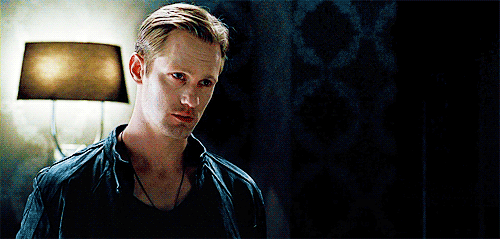

In Vedic astrology, Ketu's influence in Ashwini Nakshatra creates distinctive qualities in men under its sway, embodying a dynamic and vivacious essence. This nakshatra conveys notions of speed, agility, vitality, courage, and tenacity, traits deeply ingrained in Ashwini men. They are often perceived as energetic and quick in thought and action, carrying a persistent zest for life that propels them towards new ventures and experiences with remarkable swiftness. This Nakshatra, associated with the Ashwini Kumaras – the twin horsemen sons of Surya (Sun god) known for their healing prowess in Vedic mythology – bestows upon its natives a natural inclination towards healing and rejuvenation, be it in physical, emotional, or spiritual contexts. Ashwini men exhibit an adventurous spirit and a curiosity that extends beyond the physical and into spiritual and intellectual explorations. However, this constant pursuit of novelty can manifest as a tendency towards restlessness or impulsivity, which can be particularly dangerous given Ketu's theme of temptation and continual transformation. Ashwini's initiatory nature also comes with the caveat of dropping old paths and starting again. The influence of Ketu in this nakshatra forces new beginnings, and sometimes this can be harsh for the natives and those around them, since it can feel like they are not really present unless there is fresh excitement. They can be sort of "hit it and quit it" when it comes to many different things in their lives, and you will have to look to different areas of the chart to see if they can be "tamed" so-to-speak. Ashwini Nakshatra also holds a special significance as it is the exaltation point of the Sun, a factor that adds another layer of complexity to Ketu's influence in this nakshatra. The Sun's exaltation in Ashwini indicates a nature compatible and conducive to the energy of the Sun, which is known for its righteous purity and expenditure of energy in addition to its scalding nature when things get too close. Since Ketu cannot provide or reflect its own light, its ability to give energy will depend on the planets it is with and the energy it absorbs from others (but it will do best by itself realistically). This will inevitably create a sense of exceptional vitality, confidence, and a strong sense of self for these individuals. Ketu's celestial alignment with the Sun in this nakshatra suggests that, while Ashwini brings qualities of introspection and spiritual inclination (especially as it relates to initiatory beginnings), they also possess a powerful presence, an ability to lead, and a radiant quality symbolistic of inborn power. In essence, the exaltation of the Sun in Ashwini Nakshatra can bring forth a unique archetype of individuals who are not only seekers and healers but also leaders and changemakers.
(GIF contexts: The first GIF shows Dwayne Johnson [Mula Moon]. The second one shows Arnold Schwarzenegger [Mula Moon]. I am fairly certain both have been open about being naturally fit but then eventually switching to steroids)


Magha Nakshatra is characterized by themes of royalty, nobility, and the ancestral lineage, standing as a testament to the "mighty one." Symbolized by the royal throne, Magha is connected to themes of authority, power, and respect for tradition. The symbol of this nakshatra is the royal throne, and the ruling deity is Pitris, which are the ancestors. These signify natives who will have a deep connection to their ancestors and will receive blessings of power because of this. Men under the influence of Magha Nakshatra often display a reverence for their heritage, showing a notable pride in their ancestry and a commitment to preserving the legacy bequeathed to them through generations. This reverence for lineage is more than a nod to status or pride; it's an acknowledgment of the wisdom, duties, and responsibilities inherited from their forebears. Ketu's influence in Magha enhances the introspective and spiritual facets of these individuals, urging them to explore the meaning of existence beyond the mere physical realm. They often exhibit a strong inclination toward exploring rituals, history, and metaphysical truths, seeking to understand their place within the cycle of life and death. Magha men often possess an inherent sense of authority and a demeanor that commands respect, often finding themselves in roles that allow them to exert significant influence and guidance over others from their drive for power and recognition (one example of this is Donald Trump who has Magha ascendant, but I would not consider him Ketu dominant). Their leadership comes from a dignified bearing and nobility, reflecting Magha's royal "kingly" symbolism. Additionally, these natives are very creative and habitual. They are guided by their intuition, which taps into Leo's vibrant reservoir of artistic flair and inventive fervor. This intuitive connection fuels their desire to engage with the world in a way that feels instinctive and natural, allowing them to operate almost on "autopilot," where they do much the same things day after day so that they can free up their mind to focus on aspirations they consider more important. Such an approach enables them to withdraw into their inner worlds, providing a sanctuary where they can be free from the burdens of planning or deliberate thinking.
The final and most refined Ketu-nakshatra, Mula, encapsulates the essence of transformation and an unyielding pursuit of truth. Its ruling deity, Nirriti, is the goddess of destruction and dissolution, playing an important role in its influence on this nakshatra and its natives. Represented by the root of a plant, Mula signifies the foundation, inception, and the most profound layers of being. Men influenced by Mula Nakshatra are distinguished by their urge to unearth the underlying truths of life, a quest that compels them to probe into and understand life's most fundamental elements. These individuals are propelled by a need for authenticity and are often involved in tearing down superficial or outdated structures to rebuild more meaningful and genuine ones. This can make them seem intense or extreme, but their actions are motivated by a sincere desire to uncover and establish truths. Their journey is one of continuous transformation with phases of destruction and rebirth, reflecting the cycle of life itself. This endeavor is challenging and demands courage, as it often entails venturing into the obscure and uncharted territories of the psyche and the external world. Such journeys can be as unsettling as they are transformative, leading to significant upheavals. Being at the height of its expression and the final gandanta, Mula personifies the essence of Ketu in its most powerful manifestation, showing its natives as relentless seekers of the hidden, uncomfortable truths that lie at the very heart of existence. Their journey is one of perpetual evolution, driven by the need to strip away all that is insubstantial to reveal the core truths that make up the cosmos at large.
(GIF contexts: The first one shows Jonathan Rhys Myers [Mula Moon and Asc.] The second one shows Cillian Murphy [Ashwini Moon]. The third one shows Milo Ventimiglia [Ashwini Moon.])



Individuals with a dominant Ketu as a whole in their astrological charts exhibit a character depth that is both remarkable and elusive. Their disposition, heavily influenced by introspection and a pronounced spiritual bent, markedly differs from the traits typically associated with other planetary dominants. Such individuals often exude an air of understated simplicity, coupled with an inherent complexity that defies superficial expectations. The influence of Ketu in their lives is distinct and potent, shaping their perspectives and actions in unique ways. For example, these Ketu-dominant individuals frequently exhibit a noticeable disengagement or indifference towards conventional societal success metrics and rules, such as material wealth, status, or typical career achievements and are more focused on base survival. However, this lack of interest does not necessarily preclude them from attaining these successes. In fact, their innate ability to unearth concealed truths often positions them as agents of significant change or realization in others, providing them with a unique form of attention and influence. This laissez-faire attitude towards success and rules in addition to their ability to attract and channel energy from their surroundings can paradoxically lead them to positions of immense power, despite an apparent absence of traditional discipline and seriousness often observed in most other leaders. Their ascent to such roles can seem almost suspicious, calling to question the subtle yet powerful influence of Ketu in their personal and professional trajectories as it relates to subverting the rational mind.
In social contexts, Ketu-dominant men command a subtle yet significant influence, characterized by an allure that is both captivating and somewhat unnerving. In gatherings, they might not be the most vocal figures, yet their impact is tangible, drawing admirers and leaving a memorable imprint on those they encounter. This influence resembles a kind of gravitational force, attracting people not through an assertive persona but through the depth of their character. People in the vicinity of Ketu-dominant men often feel an inexplicable urge to confide in them or seek guidance, perceiving a hidden wisdom. However, this magnetic pull can also lead to a dynamic where others project their desires onto these men, interpreting their enigmatic, void-like nature as a blank slate for their emotional or psychological needs. This phenomenon is particularly pronounced with Mercury-dominant and Moon-dominant women, who are drawn to these men, sometimes mistaking the serene stillness of Ketu for the intense solar energy associated with a solar mastered masculine principle. Such misinterpretations can give rise to complicated interpersonal relationships, where Ketu-dominant men become the unintended focal point of intense expectations or emotions from others. Their role in social groups often hinges on their capacity to absorb and subtly influence the energies around them. This makes them effective, albeit unobtrusive, leaders, advisors, or agents of change. They possess an ability to uncover truths and insights that might elude others, and this gives them power to understand, influence, and transform the energies around them in drastic ways.
Broadly speaking, the energy absorption characteristic of men with a dominant Ketu often translates into a desire for activities that enhance their physical vitality, giving them the ability to store more and consume more excess energy. A significant number of these men gravitate towards bodybuilding among other intense fitness regimens, and even those who do not actively engage in such pursuits will still often possess well-defined physiques, simply because they are predisposed to having to rely on others. This tends to evoke extreme envy in other men who typically idolize their appearance similar to the way they do with Saturn men, but even more so, because Ketu isn't restricted in the same way Saturn is. Ketu isn't the type that is working out 5 days a week, maintaining a strict diet to stay in shape, and putting in the time and effort to rise to a position of authority. It is more like eating whatever they want and barely exercising to somehow still maintain a six pack (and taking steroids) and being stumbled upon by a modeling agent who signs them out of the blue (this reminded me of that one guy, Jeremy Meeks, who was arrested and became a model from his mugshot He has Jupiter in Mula). This physicality, however, is just one facet of their widespread appeal. These individuals are also often the subjects of envy for their innate stillness and detachment, traits that enliven them with a magnetic quality. This magnetism, ranking them as one of the most heated polar influences second only to the sun, manifests in a presence that is both captivating and subtly disquieting, affecting others on a deep, subconscious, and often uncomfortable level. The allure of Ketu-dominant men does not stem from their vibrance or charisma in the conventional sense like it does with other heated planets such as Mars; rather, people are drawn to them out of a sense of obligation or a feeling that they should offer everything within their means to these individuals, sensing unconsciously that they are dependent on energy exchange. This dynamic is reminiscent of an authority figure who commands an obsessive following, akin to a revered boss to whom everyone wants to offer gifts, engage in discussions, seek approval from, or in extreme cases cross professional boundaries with. Their natural Tamasic disposition, which requires external sources of vitality to sustain itself, inevitably attracts individuals ready to lavish them with excess energy and resources. However, this can be a double-edged sword. The instinctual adoration they receive, a facet of Ketu's malevolent influence towards the native acting as temptation from their spiritual purpose, can lead them down more sensual and materialistic paths, particularly if not moderated by external forces. This situation is comparable to enabling a drug addict’s harmful habits, where indulging their vices and forgiving them in moments of weakness exacerbates their challenges rather than aiding recovery. This example is especially critical to consider, seeing that Ketu natives' susceptibility to losing themselves in substances like drugs and alcohol that cloud the conscious mind is extremely high. These are the type of individuals to indulge in these types of things like drinking, smoking, or whatever else they can use to blot out their sense of identity–much more than they probably should. Recognizing and addressing this vulnerability is important, as it plays a significant role in their journey, particularly when they are eventually compelled to confront the repercussions of their actions when led down the wrong path. When Ketu dominant individuals engage excessively in materialistic pursuits rather than in intuitive self-exploration, they often find themselves mired in dissatisfaction and left with a sense of emptiness that they struggle to comprehend.
The enthralling influence of Ketu can have a major impact on those around them, sometimes leading to attempts by others to remodel themselves to better align with the preferences of the Ketu-dominant person. This adaptation often entails the erosion of personal boundaries and the suppression of self-preservation instincts, driven by an overwhelming fascination or obsession with the Ketu individual. It is almost like they are cult leaders who, without trying, command power over others. This phenomenon mirrors certain dynamics observed with Moon-dominant individuals, who are recognized for their emotional depth, capacity for nurturing, and power over the masses, but Ketu's influence pushes this to another level entirely. The power wielded by Ketu-dominant individuals, therefore, transcends mere emotional or even subconscious manipulation or influence; it taps into a more fundamental level of interaction, where the boundaries between self and other blur. This positions Ketu-dominant individuals, especially men, as extremely influential figures in the lives of those they interact with, capable of inspiring unsettling transformations in their admirers and followers.
Ketu-dominant men have a tendency to be more explicit in their expression of sexuality, occasionally casting a sexual hue over interactions that are otherwise non-sexual, through both overt and subtle displays. This pronounced sexualization of their interactions and aspects of their persona is reflective of their complex nature and serves as a method of attracting others for the purpose of energy exchange. They often utilize their physical presence and sexual magnetism as mechanisms to draw others into their orbit, encouraging an exchange of energy that transcends mere physical attraction. However, this aspect of their identity, while significant, can overshadow other dimensions of their personality. The focus on their sexual allure and the power dynamics it engenders contributes to a skewed perception of their character, often magnifying the "bad boy" archetype they follow. This label stems from societal expectations and projections rather than the individual's authentic self. In reality, many Ketu-dominant men may not inherently embody the dark or mysterious persona often ascribed to them; rather, they seek normalcy and genuine connection. It is just that they struggle to do so due to the intensity of Ketu leaving them bereft of normalcy. The misalignment between perception and reality can lead these individuals to be pigeonholed into roles that don't fully resonate with their true selves from an early age, compelling them to navigate a complex social landscape that emphasizes their sexual persona and outward eccentricities over their true identity.
(GIF contexts: The first one shows Justin Timberlake [Mula Moon and Magha Asc] and Mila Kunis in Friends with Benefits. If you have not seen it, their "arrangement" basically overly gets complicated because it gets too emotionally intimate and intense for them. The second one shows Jared Leto as Joker in suicide squad. I think this is a good example of how people tend to perceive these people as being darker than they really are and get casted in roles that emphasize their darker aspects. It's also fitting that the Joker just wanted to be alone but has Harley Quinn constantly chasing after him.)


When Ketu dominant individuals are more aligned with their purpose and resist extreme temptations, their interests often veer towards spiritual, creative, or philosophical domains. In these areas, they seek deeper, existential meanings and truths. Their pursuit of understanding the subtle intricacies of existence frequently leads them to explore unconventional paths, whether it be in metaphysics, the occult, philosophy, religion, or other subcultural movements that provide them with a sense of purpose. In environments where superficial interactions are commonplace, these individuals may not be easily understood or appreciated. Their depth and complexity demand more than superficial engagement for true comprehension, but most people should be wary of this, as like I said they can seem simple and grounded but will shake up your life in more ways than what you're probably wanting. Nonetheless, there remains a tendency for people to be drawn to these individuals, often submitting to their enigmatic draw they have that makes people stop thinking so much about rationality. This attraction, however, can sometimes result in Ketu dominant individuals being perceived as aloof or controlling, which is a misinterpretation of their true nature. Their apparent detachment is not indicative of a lack of empathy or a desire to dominate (they really don't want any control; people just give it to them). Instead, it stems from their intense internal focus and the ongoing process of inner development and self-realization. Their internal journey is a reflection of their outer nature, often misunderstood by those who only engage with them on a surface level. The depth of a Ketu dominant person's introspection and quest for understanding transcends the ordinary, making them complex figures who navigate their existence in ways that are not immediately apparent to the casual observer. Their journey is not just about self-discovery in terms of labels or findings one's place in the material world but also about how this internal transformation manifests in their interactions with theirs and other peoples' spirits.
Ketu dominant men often have compelling and unique perspectives on life and relationships, favoring deeply meaningful connections over temporary, superficial ones, which is usually what people want them for. Not many people can handle giving their energy away constantly, so even though it can feel like you want to give everything you have to them, when you have nothing left to give and they still aren't satisfied, it will start to take a toll on even the most fortified levels of patience. Their approach to love and relationships is characterized by a certain, shall I say... unpredictability; they are known for oscillating between periods of intense engagement and phases of extreme solitude. This pattern, which might resemble love bombing to certain people, reflects their struggle to balance their rich inner world with external relationships. These relationships are crucial for their vital energy management, yet maintaining them can be challenging due to their inward focus. In the context of friendships and family relationships, Ketu dominant individuals often appear to be on the receiving end more than anything. They can recycle energy they get from other sources to redirect it, but they'll get burnt out fairly quickly if others are not also consistently pouring themselves into these people. They maintain an aura of mystery, even among those closest to them because they can go from being hyper-social to complete hermit at the drop of a hat, in addition to being completely different in their heads compared to how others perceive them. Their approach to relationships deviates from the traditional, being more aligned with spiritual and intuitive interpretations of connections rather than conventional societal norms. This unconventional approach to relationships often leads to associations of then with the concept of "Twin Flames," likely due to the intensity and depth of connections they forge, but I wouldn't say these are particularly unique experiences to have with these people. They are just generally intense when it comes to everyone. Speaking of this, they will often be the ones to initially pursue the relationships with someone they want (including the women) and can be very persistent at it. They can become a bit overbearing, since in instances like that people initially were willing to give them energy but then started getting followed as they pulled away (kind of like having a stray dog follow you home after you feed it that can become aggressive if you don't continue to take care of it [while it may or may not destroy your home]; just a metaphor; it is not meant to be derogatory in any way-- some people can handle it and will love to do that, and it helps if they have more sattvic energies to balance it out so that it isn't super demanding). Anyway, back to the matter at hand. Yeah, they are typically the one's to initially pursue relationships with the people they want. Ketu dominant men are typically drawn to partners who share a similar depth and understanding of life in addition to their willingness to provide for him (this doesn't always mean financially; they can be very financially well off but still need a lot of attention, sex, etc. because they need energy exchange to function.) However, their compelling nature tends to attract a diverse array of individuals, many of whom may attempt to pretend to be someone they are not to align with the Ketu individual's desires, often at the cost of engaging in a sort of unspoken rivalry, where people stake claim to the Ketu person. This phenomenon demonstrates the effect of Ketu dominant individuals and those drawn into their orbit, highlighting the intricate dance of identity and adaptation in their relationships and the intensity people have a hard time understanding rationally. Their journey in love and companionship is not just about finding a compatible partner but also about navigating the intricate dynamics that their nature inevitably invites.
(GIF contexts: The first is of Chris Pine in Wonder Woman. I looked specifically for this example because I remember watching this and thinking how odd it was for him to make this otherwise normal scene so sexually intense, looking at Diana while standing there naked and commenting on being "above average." The second one pretty much speaks for itself, lol, and is of Eddie Cibrian [Mula Moon]. The third is of Derek Hough [Ashwini Moon and Mercury]. The fourth is Mickey Rourke [Magha Moon]).




Ketu-dominant men often personify the archetype of the solitary seeker, captivating everyone's attention despite their preference for solitary introspection. They mirror the essence of an isolated mystic or artist that people are still obsessed with, drawing people to them who feel a compelling need to help them exchange energy in various forms (while I was kind of just exploring this thought, it reminded me of the Lion from Sing 2 played by Clay Calloway and the movie showed them going out in the middle of nowhere to go get him for their concert, and it turns out he has Mula Sun). This dynamic resembles the experiences of being famous, where, irrespective of one's desire for privacy, there is a constant pull from others to engage in some form of energy exchange, be it through a photograph, a conversation, a performance, or more intimate interactions. This intensity of interaction can be overwhelming and is a testament to the powerful presence these individuals possess.
In their professional lives, they may gravitate towards roles that favor deep analysis, solitary work, or engagement with the metaphysical aspects of their field, but there are usually still aspects of power – be it as researchers, healers, spiritual leaders, or creative artists. Their approach to relationships and social interactions is apparent from a discernible depth; they are the individuals who, at gatherings, might be found in the center of everything even though they were just trying to sit in a quiet corner to have a deep conversation with someone else. Preferring the sanctity of their personal space, they also might not even attend even though people will still try to drag them out. With the sun, it is more direct and will burn people that get too close, whereas for Ketu it can become draining and overly intense in the sense of Ketu men's piercing ability to reveal hidden truths. It demonstrates the paradox of their existence: while they are naturally inclined towards isolation and introspective pursuits, their fundamental nature attracts others who seek to either bask in their aura or dole out energy, even when Sun and Ketu natives themselves prefer the quietude of their own company. (As a side note, Ketu can really piss off the Sun sometimes, because Ketu doesn't combust. It can latch onto the solar energy without having to deal with the harshness of it, and that seriously disturbs Sun-dominant individuals because they are both very heated in polarity). In their professional lives, Ketu-dominant men typically gravitate towards roles that require deep analysis, solitary work, or a focus on the metaphysical dimensions of their field. Even in these settings, elements of power and influence are often present, whether they serve as researchers, healers, spiritual leaders, or creative artists. Their unique approach to relationships and social interactions is marked by an unmistakable depth.
(GIF contexts: First one is of Hugh Grant [Ashwini Moon and Mula Jupiter]. Second one is Tyler Hoechlin [Ashwini Moon and Jupiter].


#vedic astrology#astrology#astrology observations#nakshatras#zodiac#astro community#astro notes#astro observations#zodiac signs#astrology notes#vedic chart#vedic astro observations#vedic astro notes#vedic texts#vedic mythology#lagna#astro placements#astroblr#sidereal astrology#Ketu men#Ketu-dominant men#Aries#Leo#sagittarius#sidereal
206 notes
·
View notes
Text
#asteroids#astro community#astro observations#astroblr#astrology#astronotes#zodiac side of tumblr#astro notes#tarot cards#vedic astrology#astrologer#asteroid#astro#ask#vedic astro observations#vedic chart#vedic astro notes#vedicknowledge#vedic texts#vedic#ask me stuff#Scorpio#Pisces#Virgo#6th house#8th house#12th house
12 notes
·
View notes
Text
The Third Eye of Shiva: Understanding its Symbolism and Significance
Introduction:
In Hindu mythology, Lord Shiva is one of the most revered deities, and his third eye is a prominent aspect of his iconography. The third eye of Shiva is believed to be a symbol of wisdom, intuition, and enlightenment. In this article, we will explore the symbolism and significance of the third eye of Shiva and its relevance in modern-day spirituality.
What is the third eye of…

View On WordPress
#Hinduism#meditation#Mythological deities#Mythology#Philosophy#Religion#Shiva#Significance#spirituality#Symbolism#Third Eye#Vedic texts
4 notes
·
View notes
Text
Any takes on Rahu in Ashlesha 6h?
#astro observations#astro posts#astrotips#astrology#astro notes#astro community#astro chart#ashlesha#vedicknowledge#vedic chart#vedic culture#vedicwisdom#vedic astrology#vedic texts#rahu ketu#6th house#astro vedic
5 notes
·
View notes
Text
Nakshatras as texposts I've found here part 3
This is a lot of fun omg
Ahwini:

Vishakha:

Magha/Mula:

Swati:

Bharani/Uttara Bhadrapada:
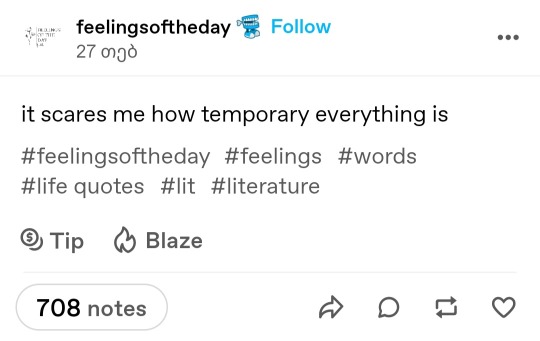
Bharani/ Jyeshta:

Anuradha/Shravana:
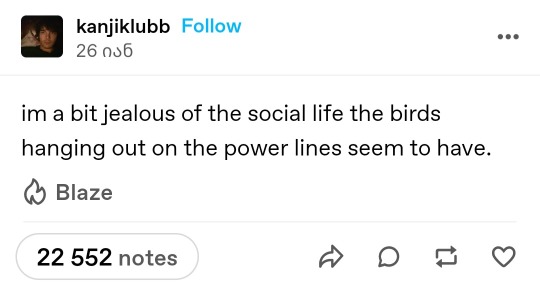
Revati(!!!):

Ardra:

Revati:

#fun fact: ashwini is associated with both horses and bees :) (!!!)#astrology observations#vedic astrology#astrology#nakshatras#sidereal astrology#bharani nakshatra#astro notes#astrology tumblr#bharani#revati#magha#ashwini#mula#ardra#shravana#anuradha#vishakha#jyeshta#uttara bhadrapada#swati#text posts
49 notes
·
View notes
Text
Lord Indra, the natural hero who never was
or why Sasuke and Madara always shine despite the whole plot in their disadvantages.
Hero : a mythological or legendary figure often of divine descent endowed with great strength or ability. b : an illustrious warrior. c : a person admired for achievements and noble qualities. d : one who shows great courage.
Going out of my MGA writing retreat cave for a sec and share with you some of my researches...I don't have great knowledges of vedic texts and Indian culture but to what I read so far (correct me if I'm wrong) Indra is the King of the devas and Heaven. In similar fashion, Zeus king of other gods in Greek mythology. Indra controls storm, rain, and uses thunderbolt as one of his most deadly weapon. He is both the archetype of the mighty warrior, the slayer of great evil (asuras) and also the life-giver. Because you know, rain fertilises earth (if you get the metaphor 💦... 👀). One of his most famous story is how he destroys Vritra the monstrous snake/dragon, also called an asura, who was responsible for holding back waters and created drought. And by doing this, Indra slain the archaic forces blocking the creation of new lives.
As a Naruto fan, I get now the inspiration for Otsutsuki Indra. Sasuke's preference for raiton and kirin, Madara as a god of war and user of storm release, the symbol behind Sasuke killing Oroshimaru in his white snake shape, susanoo although a japanese god is still god of storm killing an other massive snake...
It's kind of funny because Indra is, based on the Vedas tradition, the allegory of the perfect hero. He comes alone, strong-willed, powerful, and slays any obstacles to the natural cycle of life, and by doing so he saves humanity from chaos. And it's precisely what is despise in the Narutoverse about the characters assimilated to him, namely Uchiha clan and Indra Otsutsuki. Indra opposing his unfair father is bad. The Uchiha clan defending themselves against oppression is devilish, Sasuke seeking revenge is detestable, Madara looking for a world purged of evil is absolutely hideous.
There is as well many shinto inspirations but I'm mostly reading here the story in a Vedic perceptive and you'll notice something else about the asura's. It's not a single god but a group of demons always confronting the devas. They are seen in a negative light, the anti-gods, the power-seekers ect... And it kind of makes sense with Naruto who can't progress on his own. He needs to be constantly help and surrounded by people. He is also notoriously possessed by a powerful demon who manifest himself in the beginning of the story when Naruto is corned to anger. Notice also that the only way to control this demonic force is either the sharingan assimilated to shinto spiritual strength or Mokuton from the Senju being assimilated with Buddhism spiritual strength.
So now you get where I'm going... isn't weird that mostly Narutoverse is respecting mythologies and adapt them to its own storyline. For instance the sannin legend, Kaguyahime story. But for Indra and Asura it's a total reverse of values. Intentionally, the good is bad and the bad is good.
Yeah but the plot Al Hekima, don't forget the plot ! I know, I know... If your main character is a boy possessed by a demon, befriends with 9 others demons and it's apparently normal, it will end up this way.
Maybe I'm not objective after all but even before going deeper into analysing the Narutoverse, Indra and the Uchiha clan being seen as cursed and evil by nature, the people who went astray and needed to be beaten into submission, always left me unsettled. Literally, I couldn't comprehend what was wrong with them which justify so much hate. And in opposite Naruto being possessed by a demon is blatantly black magic. His father is never questioned about doing it to his son, neither Hiruzen to the young Kushina, or Hashirama to his wife (in this case they may have both agree). I know it's just fiction, but art doesn't come out of the blue. It's ingrained in the artist's set of value, cultures, emotion ect... And the author stressed in interviews that he wanted to bring positive value to his younger audience. I'm just questioning sometimes what are actually those values? For the Uchihas the idea was to forgive, to not fall into hate, and move on. But forgive without justice? Putting the pressure of moving on solely on the victim and never put the perpetuator in a difficult position? Never ask any apology or reform from the aggressor? The victim needs to forgive with no assurance that it won't happened again. Believe it, right? and eventually the victim needs to help the system who harmed him to keep going... Anyway I'm rambling at this point but that's always my major philosophical disagreement with Kishimoto.
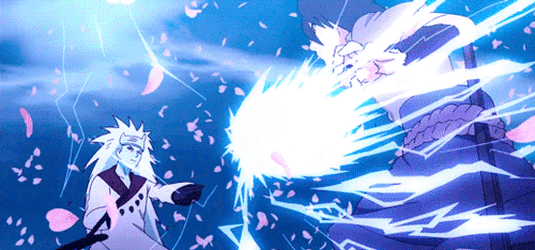
#Sharing with you some of my researches while writing my fic#madara golden age#it was suppose to be a short post but apparently I can't do that lol#and also those researchs explain why it's so easy to rewrite Madara/Sasuke as heroes because they ARE#Madara#Sasuke#Indra#Asura#Indra in vedic texts#Naruto#Sasuke's popularity almost overshining Naruto is logic#Even Naruto is obsessed with the true hero of the story
194 notes
·
View notes
Text
Mythic, Divine, Godly, and Religious Objects
As always, process recorded for me and published for others, and my disclaimer is in my bio.
Recently, I received an ask regarding the mythic asteroid Aphrodite [1388] conjunct the Ascendant. I thought I'd explain my process for interpreting charts and placements within them, starting with how I define and differentiate mythic objects. If you are confused or curious about my perspective, you can refer to this post.
What makes an object...
🌟 MYTHIC
Mythic objects are asteroids and minor objects that signify a story or an element from a story of myth, legend, or religion, which the astrologer need not necessarily follow, believe in, or practice.
For example, Orpheus [3361] and Eurydike [75] are figures of Hellenic myth. You don't have to practice Hellenic paganism to refer to them as mythic objects.
Regardless of your beliefs, you will find Eurydike to represent disappearances, romantic distance, and the tragic muse, and Orpheus to represent grief, obsession, and the tragic artist.
Read more on interpreting Orpheus and Eurydike here.
🌟 DIVINE
Divine objects are mythic asteroids and minor objects that signify a cosmic power, spiritual process, or holy place which is significant to the astrologer's faith.
For example, near any spiritual astrologer could refer to Spirit [37452] and treat it as a divine object, as near all religions have a concept that falls in line with that of 'spirit' or a 'spirit'. Thus, it's appropriate to use as such on near all occasions.
However, asteroid Karma [3811] should only be interpreted as a divine object for those who incorporate Hindu concepts of karma into their faith. Non-Hindu astrologers can refer to it, but should do so as a mythic object.
🌟 GODLY
Godly objects are divine asteroids and minor objects that signify the intervention of a specific deity, group of deities, or other named figure which the astrologer worships and which hypothetically possesses its own unique will and perspective.
For example, Christians would treat Christ-related objects as godly and the same for Hindus, pagans to their various pantheons, etc.
For objects of dubious divinity, it relies even more so on personal beliefs. For example, asteroid Lucifer [1932] is only a godly object to an astrologer who practices devil worship. The asteroids of the saints would only be considered godly if a Christian treats them as conduits for the Christian god.
Otherwise, one should treat the object in question as a mythic object, as described above.
Read about how to identify your own prominent godly objects here.
🌟 RELIGIOUS
Religious objects are fundamentally different as they are asteroids and minor objects that function as symbols of religious institutions, rather than the faith, or the stories for which faith is held.
Religious objects may double as mythic or even divine objects, depending on the context of the reading, but not necessarily.
For example, the asteroid Holiday [365443] may be used in a spiritual reading in tandem with a Godly or Mythic asteroid to refer to a specific holiday - perhaps using the aspects between the latter object and the former.
However, it can also represent, independently, the existence of holidays in general, regardless of to whom the days are holy.
Another example would be Church [10343]. It is obviously a religious object, regardless of your faith.
But if one is raised Catholic and has a prominent asteroid Peter [1716], it may also serve the purpose of a mythic asteroid, for he founded the church.
My next posts will be on finding mythic, divine, and godly objects prominent for you based on their type.
Keep an eye out, and I hope this was useful to even a few of you! Thanks for reading ♡♡♡♡♡♡
#astrology#asteroids#aspects#natal chart#western astrology#vedic astrology#divisional charts#faith#religion#religious astrology#paganism#hellenic mythology#hindu mythology#indian astrology#natal asteroids#idk why the fucking text is doing that its really fucking annoying. Tumblr fix your website challenge#literally nothing fixes it and I have a headache so yk fuck it
125 notes
·
View notes
Text
“He who is rich in the knowledge of the Self does not covet external power or possession.”
Paramananda, The Upanishads
38 notes
·
View notes
Text
Multiverse and the Eternal Soul: Insights from the Bhagavad Gita
Embrace the journey of self-discovery & spiritual growth. Seek profound connections within the Bhagavad Gita's wisdom. Unlock the secrets of the eternal soul, find cosmic oneness & transcendence. Let the multiverse's mysteries guide you. Namaste! 🕉️
Setting the Stage: The Eternal Soul (Atman) in the Bhagavad Gita
In the sacred verses of the Bhagavad Gita, we encounter the profound concept of the eternal soul, known as the atman. Setting the stage for spiritual contemplation, the Gita reveals the atman as an eternal, unchanging essence within every living being, beyond the realm of birth and death. It illuminates the eternal soul as a divine…

View On WordPress
#Bhagwad Gita#Cosmic Understanding#Eternal Soul#Hinduism#Inner Journey#Multiverse#Philosophy#Profound Connection#Sacred Texts#Self-Realisation#Spirituality#Universe and Beyond#Vedic Lieterature
1 note
·
View note
Text
The Ashtavakra Gita | Samhita | ANCIENT Vedic TEXT | I AM SELF LUMINOUS स्वप्रकाश
In the eyes of the Ashtavakra,
one’s true identity,
the Self,
is not contained in objects,
nor does any object exist in It.
It is without form and can be found by simply recognizing one’s being as the Witness Self.
Everything else is an illusion
The “little” self,
as in our perceived personality and identity,
the world, the universe.
All these things arise with the thought “I”,
the…
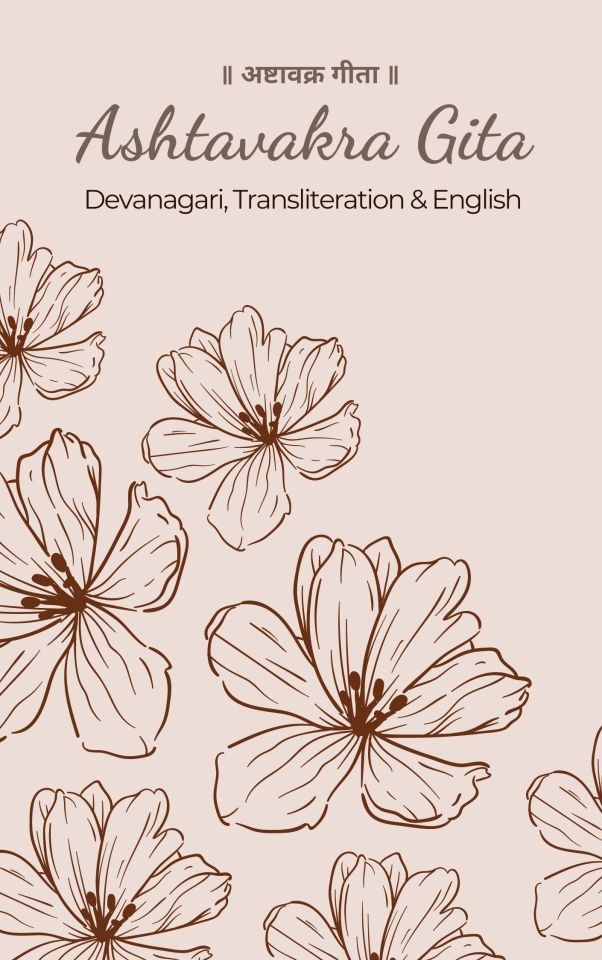
View On WordPress
0 notes
Text
Vedic Astrology Observations
Moon Dominant Men: “Deep and Mysterious”
🌖🌗🌘🌑🌒🌓🌔

(GIF context: Taken from Shadowhunters depicting a gay couple with Matt Daddario (left) who is Moon Dominant [Hasta sun and ketu with ketu as moon nakshatra ruler] and Harry Shum Jr. (right) who is Rahu Dominant [Ardra moon and Swati Jupiter with Sun in Jupiter ruled nakshatra]. Both actors identify as straight.)
In Vedic astrology, the Moon, or “Chandra”, occupies a position of profound significance. It is coveted as the very embodiment of the mind, a symbol resonant with clarity, reflection, instincts, and cycles, which when combined come to form what we know as perceptual consciousness. Like the Moon, which shines by reflecting the Sun's light, the mind similarly reflects its environment. It captures and reinterprets external stimuli, forming a consciousness that is, in essence, an image similar to that of a mirror of the surrounding world. In Vedic astrology, the Moon is a celestial body that stands as the fundamental indicator of one’s capacity for emotion and extends to one’s ability of cogitation, shaping the manner in which thoughts and emotions are processed and articulated. In contrast to Western philosophical perspectives, which tend to dichotomize emotions and logic, framing them as diametric to one another, Vedic astrology presents the Moon as a mediator that brings the two faculties together through upholding the position that our cognitive and decision-making processes are inextricably linked with emotional undercurrents. It echoes a sentiment that, even in endeavors that ostensibly try to prioritize objectivity, such as with epistemological pursuits, true objective knowledge is nothing but an elusive ideal. This stems from the notion that our perception forms our reality, encapsulated in the phrase, “I am my universe.” This is where the significance of the Moon in Vedic astrology becomes particularly relevant. It posits the idea that our subconscious greatly influences our conscious mind, thereby molding our individual perceptions of reality and shaping the way we experience the world. It recognizes the limitations in our control over our mental faculties and how emotions actively play a part in deciding our thoughts and life trajectories, whether we like it or not. This allows the symbolism of the Moon in Vedic astrology to effectively capture the human condition's amalgamation of thought and feeling, thereby speaking to the interaction of light and shadow in the psyche and the ongoing process of mental transformation.
Men with a pronounced lunar influence in their astrological charts, notably distinguished by those with primary placements (Sun, Moon, or Ascendant) in or aspects with Moon-ruled nakshatras such as Rohini, Hasta, and Shravana (planetary dominance can be determined in more subtle ways as well), present an intriguing study into the nuanced expressions of masculinity and relational dynamics. Examples of Public figures like Henry Cavill, with his Shravana Ascendant and Moon in the first house, or fictional characters like Flynn Ryder, voiced by an actor with a Hasta Sun and Rohini Moon, exemplify a unique blend of characteristics associated with lunar dominance that I will continue to explore further.
(GIF and image contexts: The first GIF shown depicts Henry Cavill as Clark Kent in Man of Steel. The second is an image showing the fictional character Flynn Ryder side by side with his voice actor Zachary Levi.)

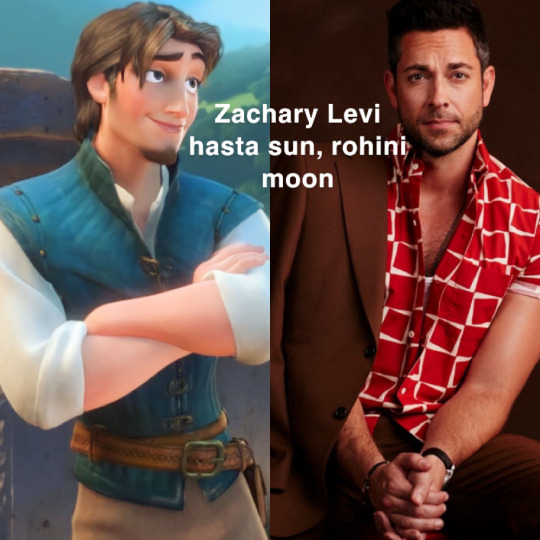
The influence of the Moon on men can be understood through the influence of the mother and the lens of "Yin and Yang" in Eastern philosophy. In Vedic astrology, the Moon's connection with the mother can be said to link the development and characteristics of individuals to the amount of nurture and emotional sustenance they were provided with as a child. This nurturing shapes the robusticity of their intrinsic Yin qualities – receptivity, passivity, intuition, and a deep connection with the maternal aspects of life, often linked to the feminine. These qualities are further symbolized by the Moon and its cycles, traditionally associated with menstruation, highlighting the cyclical and nurturing features of femininity. In contrast, Yang represents the dynamic, assertive, and outward energy projection, typically linked to the masculine and more solar sattvic energies. Men with Moon-dominance in their astrological profiles embody this Yin energy, exemplifying a reflective masculinity and an inward understanding of femininity. This inward orientation of Yin, shaped significantly by the emotional and nurturing bond with mother figures, provides these men with a deeper understanding and connection to various feminine aspects of life. At the same time, the outward orientation of Yang allows for an external connection to the masculine, producing a self-identified masculinity that is introspective and emotionally/mentally attuned to the feminine while still being confident in its own nature. This ultimately does have a dampening effect on their exhibition of traditionally masculine behaviors, being that men as a whole are ruled by the Sun and are said to be more solar, while women as a whole are ruled by the Moon and are said to be more lunar. (The 24-hour circadian rhythm is based on the male hormone cycle and aligns with the Earth's orbit relative to the sun, while women have what is known as an infradian rhythm, which follows the 28-day lunar cycle, for reference). This internal emphasis on Yin but external reflection of Yang in Moon-dominant men's personalities makes them emotionally rich and empathetic, displaying a unique blend of masculine and feminine energies that is both introspective and in harmony with the external world. The Moon serves to harmonize the intense energy of the Sun, offering calming and nurturing attributes, ultimately leading to the formation of a kind of masculinity in these men that is fluid and can express strength in gentleness and assertiveness in sensitivity. However, this can also make them uniquely susceptible to certain challenges, which I will continue to discuss further in the following paragraphs.
The Moon is also tied with its nodes: Rahu and Ketu, the two mathematical points where the Moon's orbit meets the ecliptic (if you didn’t know, the Moon does not directly follow the ecliptic itself, which is the sun's path in the sky; it’s about 5° off approaching either node). The Moon's astrological significance is intricately linked to Rahu and Ketu, with all three governing distinct facets of consciousness. Rahu, often depicted as the head of a dragon or the head without a body, symbolizes material desires and is associated with the future, representing the qualities we need to develop and the experiences we must have to grow. Rahu is primarily concerned with the rational mind and the projection of consciousness into the material realm, epitomizing ambition, desire, and worldly aspirations. It represents the part of the psyche that is outwardly focused, engaging with the tangible aspects of life that are said to paradoxically represent the illusion of Maya. Conversely, Ketu, commonly depicted as the dragon’s tail or a headless body, represents detachment, spirituality, and the internal journey. It is associated with the past and karmic baggage, indicating the lessons we have learned and the experiences we must release to evolve through Samsara to achieve Moksha. Ketu is about letting go and achieving spiritual enlightenment. It is associated with intense spirituality, introspection, and the aspects of the psyche that delve into the depths of the subconscious and the ineffable. Ketu represents the part of the mind that seeks to understand and connect with the intangible, the mystical, and the existential. (In Vedic mythology, Rahu and Ketu are said to be the same demon killed by Vishnu)
The Moon acts as a mediating conduit between these two nodes, attempting to balance the rational, materialistic impulses of Rahu with the spiritual, introspective tendencies of Ketu. It symbolizes the emotional and perceptual aspects of consciousness, playing a supreme role in how feelings and intuition are integrated with rational thought and spiritual insight. The Moon's position in a chart thus reflects the ongoing dance between the material and spiritual dimensions of human existence, influencing how individuals perceive and interact with the world around them. And because the moon works with the energy of both nodes, we can gain knowledge into the expression of Moon-dominant individuals by looking at aspects of Rahu-dominant and Ketu-dominant natives.
Rahu-dominant men often exhibit a desire for control, particularly in their mental environments. Their creativity often manifests in unique, sometimes eccentric ways, setting them apart in their expression and thought processes. These individuals typically lean towards liberal ideologies, embracing progressive and forward-thinking concepts but is often against society as a whole. Rahu-dominant men are often driven by ambition and a desire to achieve success and recognition. They are inclined to be more outwardly assertive in their quest for control, sometimes pursuing their goals with a relentless, almost aggressive, determination. This pursuit often leads them to challenge established norms and push boundaries, both socially and professionally. And while Moon-dominant men share traits with Rahu-dominant men, they exhibit distinct differences in how these characteristics are expressed and integrated into their personalities. Moon-dominant men tend to internalize their need for control, focusing more on emotional and psychological self-mastery. They are more concerned with understanding and regulating emotions rather than exerting control over external circumstances for the sake of gaining power, and they are more satiated with what they have rather than desiring what they don't, making them less materially-orirented than Rahu. Rahu men often have an obsession with external appearances and how others perceive them, trying to enforce their own rules or standards on others in order to gain the upper hand, but Moon men just want to maintain their own sense of security. They may still try to subtly reshape situations though, not to become the dominant power, but as a means to maintain their personal well-being, even at times to the detriment to others. Additionally, their approach to creativity is more reflective and introspective than what you might expect to see from Rahu, often drawing from deep emotional reservoirs and personal memories. Moon-dominant men may too challenge conventional thinking like Rahu dominant men, but their methods are typically more subtle and under the radar. For example, if a Moon-dominant man wants to avoid an arranged marriage, he might subtly express concerns or sadness about the marriage in a manner that is meant to gently persuade his family to rethink their decision. Simultaneously, he might engage in covert actions to disrupt the arrangement, such as discreetly creating scheduling conflicts and other minor obstacles that prevent it from happening efficiently as if to send unconscious signals that it was not "meant to be." In more extreme instances, he may feign agreement, choosing instead to engage in extramarital affairs, all while maintaining a cloak of compliance to avoid direct confrontation. This is in stark contrast to a Rahu man who will openly question and criticize the tradition, speaking out against his family to say it is stupid, and he may even actively rebel against it by running away to marry someone else.
(Add-on: both Rahu and Moon men possess an acute awareness of the perils of straying too far from rationality and thus are inclined to maintain a strong connection with external reality. They may encounter challenges when they engage too much with the immaterial, like dreaming, drugs, alcohol, gambling, etc., leading to their connection with external reality becoming tenuous. This disconnection can lead to issues such as escapism, addiction, and emotional disturbances, so be wary and try not to get to the point of obsession where you lose sight of your life.)
Conversely, Ketu-dominant men often possess a deep internal focus and an inclination towards introspection. Ketu-dominant men are often characterized by their profound spiritual orientation and a tendency towards seeking inner peace and enlightenment. They may exhibit a strong interest in the metaphysical or the mystical, delving into areas that transcend the material world. This spiritual pursuit often leads them to detach from worldly ambitions and superficial desires, making them appear aloof or disinterested in material success, paradoxically leading them to attract immense power. They tend to absorb energy from their surroundings, revealing truths in impactful ways and arousing servitude in others due to their stilled, void-like nature that makes people want to give to these men tirelessly. Ketu-dominant men might display a more pronounced detachment from their emotions. While they are capable of deep feeling, they often approach their emotions from a place of observation and analysis, rather than immersion. This detachment can sometimes be misinterpreted as coldness or indifference, but it is more accurately a sign of their deep internal processing and preference for solitude. Moon-dominant men, while sharing certain introspective and internal qualities with Ketu-dominant individuals, exhibit these traits in distinctly different ways, shaped by the unique lunar influence. while Moon-dominant individuals also exhibit introspection and depth, their focus is more on the emotional and psychological features. They are keenly attuned to the nuances of their own emotions as well as those of others, and this emotional sensitivity often translates into a strong sense of empathy and an intuitive understanding of human nature. Unlike the Ketu-dominant detachment, Moon-dominant men are more engaged with their immediate environment, forming deep emotional connections and valuing interpersonal relationships more than Ketu men (note that this also depends on the placement of moon in the chart as a whole, like 12 house Moon in Jyeshtha will be more Ketu-like for example). Moreover, Moon-dominant individuals may exhibit a fluctuating nature, akin to the waxing and waning phases of the Moon. They can be adaptable and receptive, often reflecting the energies around them, which can lead to a rich, albeit sometimes confusing, emotional life. This contrasts with the more consistent, inward-focused nature of Ketu-dominant men, who may remain unfazed by external circumstances, steadfast in their introspective approach for better or worse. People are drawn to both Moon and Ketu dominant men due to their compelling allure of hiddenness, but unlike the Ketu man that will remain still and almost hollow, absorbing all of the energy and power they come in contact with through their tamasic nature, Moon men will reflect energy back. This reflection of energy, softer and more reciprocal, differentiates Moon-dominant men from their Ketu-dominant counterparts, in the way that it doesn’t illicit as much discomfort in others. What usually happens with Ketu men is that others sense their inherent “emptiness,” which causes them dis-ease to the point where they will shower these men with energy in hopes that doing so will change the Ketu man or stabilize him. But Ketu men don’t work like that; their purpose is to take and consume, so no matter how much energy people give them, it is never going to be enough to make that penetrating uneasiness they give off go away. This isn’t a bad thing though. In fact, it is beneficial to the energies whose purpose it is to give, like Jupiter. It just comes down to the role people are meant to serve in this life. The differences between Moon and Ketu men highlight the unique ways in which they connect with and respond to the world around them as it relates to their Dharma.
Connecting Rahu and Ketu, because of the Moon’s relationship with both of these astrological energies, Moon-dominant natives will not only resonate with the powerful spiritual and subconscious layers of Ketu, but also to the more tangible, worldly, and reasoned aspirations represented by Rahu. This connection with Rahu and Ketu instills Moon-dominant men with a magnetic charm, characteristic of Ketu men, that is less domineering and still grounded in the more rational world of Rahu, making their allure more accessible and relatable to others. Unlike the piercing, sometimes overwhelming and obsessive depth of Ketu and the overbearing frigidity and judgments associated with Rahu, the Moon's influence results in more of a balanced persuasive appeal, empowering them with an immensely vitalizing aura. Overall, while there is a resemblance between the effects of Rahu/Ketu and the Moon, the way they manifest and are perceived is distinct. I think it bears mentioning that since the Moon deals with the energies of both, its natives are also susceptible to accompanying pitfalls for either. Because despite their inter-relation, the Moon’s integration of these energies can be messy. Rahu and Ketu are the extremes, which can end up eclipsing the Moon and/or the Sun, “swallowing” their energies (light) to try and destroy them. This solidifies the nodes’ place as natural adversaries of the luminaries.
(Add-on: There’s a balance that must be struck when dealing with these energies, and sometimes they can just be too difficult to manage, leading to things like insanity. While the Moon, Rahu, and Ketu are similar, it is important to remember the differences, with the main takeaway being to exercise awareness and moderation, as these energies can be seriously harmful when experienced in excess. Intriguingly, individuals under the influence of the Moon, Rahu, or Ketu bodies often show the most fascination with understanding psychology, perhaps drawn to explore the very forces that make them uniquely susceptible to emotional and mental turbulence. And oh… isn’t that poetic?)
Alright, now let’s get into the juice of things. As alluded to before, men whose astrological charts are heavily influenced by the moon have the ability to understand emotions and empathize deeply with the feelings of those around them, allowing them to form powerful connections within their relationships. Their insight into the human mind and “heart,” much like the Moon's light that gently illuminates the night, shines on the more hidden aspects of those they interact with. They are known for their exceptional depth of emotional acuity as well as having an intuitive grasp of mental states, including their own. This is typically not overt, however, since there is a concealed nature to the Moon, being traditionally associated with obscurity and subtle aspects of the human psyche. In addition to this, since men perceived as being outwardly feminine have historically been subjects of abuse and harsh treatment from society, Moon-dominant men are more inclined to sheath the less hardened parts of themselves for fear of social scorn. This is important to keep in mind, since Shravana is the most refined and mature expression of the Moon.
Symbolized by an ear, this nakshatra signifies listening, learning, and connection. It is associated with the acquisition of knowledge and the understanding of the world. Men influenced by Shravana may possess a strong inclination towards gathering information, being attentive listeners, and showing a deep interest in the narratives and experiences of others. This attentive and perceptive nature is a personification of the Moon's influence, producing qualities like empathy and understanding, which can be seen as more feminine in nature. Being in Capricorn (the natural ruler of house ten: career and reputation), it is also deeply entwined with themes of reputation and public perception in addition to control. This comes into focus when we consider how Vishnu, the Deity ruling over Shravana for men, is the preserver, suggesting a proclivity of these men to maintain their public reputations and personas through discipline (Saturn deals with control and discipline and is the ruler of Capricorn, for reference). Interestingly, I’ve noticed that Rohini and Hasta men tend to be more openly receptive than Shravana. Hasta is a nakshatra that is linked with dexterity and skill, symbolized by a hand, and more specifically with the ability to manifest one’s desires into the hand. The influence of its ruling deity Savitar, an incarnation of the Sun (contradictory, I know), gives Hasta characteristics of vigor, intelligence, and the ability to dispel ignorance. However, this solar influence is juxtaposed with the Moon's governance over Hasta, which brings in a more calculative desire for energy exchange through things like conversations, meetings, sex, negotiations, fighting, etc., which is not carried out in quite the same way as Sun-dominant men, being that the Moon introduces a more emotionally intelligent approach to these interactions. While the Sun's influence might drive a person towards externally focused actions where they expend energy carelessly, the Moon's guidance in Hasta gives a deeper sensitivity and awareness in their engagements. This means that their approach to energy exchanges, whether in professional settings, personal relationships, or even in conflict, tends to be more reflective and considerate of the emotional context. Men influenced by Hasta may exhibit a strong, vibrant persona, often marked by a commanding yet undeniably soft presence (I’ll reference him again, but the best example of this I could find is Leonardo DiCaprio who is Hasta Moon and Ascendant). Rohini, the first nakshatra under the dominion of the Moon and co-ruled by Venus in Taurus, is emblematic of the chariot, an ancient symbol related with themes of progress, movement, and evolution. This nakshatra's associations with growth, creation, and fertility find their roots in the nurturing energies of the Moon, where it is in exaltation, and the artistic, sensual qualities of Venus. The deity overseeing Rohini, Brahma, is revered as the creator in the Hindu pantheon, further intensifying the nakshatra's intrinsic connection to creativity, nurture, the enjoyment of creation, and the genesis of life. Rohini men often exude natural charm, emphasized by a creative and nurturing disposition. These qualities, resonating with the creative and generative aspects of Brahma, can be seen as more feminine in nature. However, due to societal pressures to adhere to traditional masculine norms, Rohini men might feel compelled to mask these traits. The pressure to conform to traditional masculine norms might lead Rohini men to stifle or conceal these aspects of their personalities, as I've come to acknowledge can be a facet of all Moon men.
The Moon's dominance in a man's chart can influence his expression of gender and identity, modulated by whether he is accepting of his femininity, as observed in public figures like David Bowie (Shravana asc. and Rohini rahu), Prince (Rohini sun and mercury), Troye Sivan (Rohini sun and mercury), etc. These men, embracing their lunar qualities, often work to defy traditional gender norms, adopting androgynous styles that symbolize the fluidity of their gender identity. Their choices in fashion - long, flowing hairstyles, delicate fabrics, and makeup or nail polish - are external manifestations of their inner lunar essence. Some even go as far as dressing up like women! It is not done in a castigating manner where they make fun of the idea as a form of humiliation either; rather, it is more of an attempt to make a full embrace of what it would be like to genuinely exist as a woman, albeit a tad bit over-exaggerated in terms of femininity, but to be fair, that’s the same for Moon-dominant women as well. (This is a bit of a tangent, so skip if you aren't interested. Interestingly I think these men’s personas of women are closer to Ashlesha [in cancer rashi ruled by moon but nakshatra ruler Mercury] than of Moon nakshatra women, possibly being a result of these men having so much pent up female sexuality that yearns to be dominated in much the same way as Ashlesha women, who act outwardly dominant to test the virality of others – beckoning to be overpowered. I noticed this in the new movie Expendables, which stars Jason Statham and Megan Fox (Ashlesha moon). In one scene, they are fighting and Megan Fox comes out on top before again being overpowered, demonstrating that the man is virile enough to "have"/contain/satisfy her. And then she redirects his penetrative energy yet again, which is a common theme of Ashlesha. The "cutesy" fake innocence at the beginning is also something Ashlesha women are known for.)
(GIF context: It shows Troye Sivan dressed in drag for his latest music video and song "One of Your Girls". He is also openly gay and for the time being has not declared he is trans, nonbinary, etc. For fun, you can compare that with this music video with Megan Fox, who is an Ashlesha woman to see what I mean when I compare them: video.)

However, most Moon-dominant men are not as comfortable expressing this duality so openly. Many, in response to societal pressures that valorize hyper-masculine traits and often stigmatize femininity in men, adopt a façade of heightened contentment, stoicism, and control. This outward show, mirroring the characteristics of Sun and Saturn-dominant men, is an attempt to conceal their innate Yin nature. Yet, akin to the Moon which only reflects the Sun's light in a softer, cooler manner, their portrayal of hyper-masculine traits is not pure or without cracks. People can still very much pick up on their the fact that they are simply reflecting masculinity while still internally housing receptive feminine energies, since they reveal themselves in small but noticeable ways that make them stand out from other men. They usually carry with them an undercurrent of mystery, farce, and a general tendency to be overly, and dare I say even comically, brutish, while their emotionally expressive nature still peeks through. This divergence from the archetype they emulate within imparts an illusory, intriguing energy to their persona, attracting some while aggravating others who are less willing to accept the illusion. The struggle to mask their true nature often leads to complex interpretations of these men. It reflects the multifaceted nature of the Moon, continuously oscillating between visibility and concealment, constantly changing from clarity to mystery. This theater play of lunar influence in their lives makes these men seem as though they are impossible to understand fully, impressing, confusing, perplexing, and captivating all who come across them.
Celebrities like Theo James (Hasta moon and Shravana venus), Christian Bale (Shravana sun), Noah Centineo (Shravana moon and ketu), Joe Jonas (Shravana moon and Hasta asc.), etc. find their sexuality and morality subject to speculation and even denial by the general public. This scrutiny mimics the way women are often doubted and judged, suggesting a societal judgement of the feminine nature. The public's perception and scrutiny of the sexuality and morality of these men often reaches a point where rumors and allegations, ranging from them secretly being gay or abusive, become rampant. This perceived incongruence between their public persona and private self can trigger a sense of being "lied to" in observers, leading to a backlash or a desire to uncover the 'truth' about these men. The Moon's influence, thus, extends beyond the individual to affect public perceptions and reactions in this way. This phenomenon also offers insight into why Moon-dominant male celebrities (in addition to Rahu and Ketu-dominant men, I’ve noticed) often find themselves cast in roles as gay characters, even while being openly straight, such as in the case of Jake Gyllenhaal (Rohini moon, Hasta jupiter and saturn, and Shravana ketu [his second dominant]) in "Brokeback Mountain,” Harry Styles (Hasta moon & Shravana sun and venus) in “My Policeman,” Ewan Mcgregor (Hasta asc. and cancer rashi ketu in Ashlesha) in “The Pillow Book,” Nick Robinson (Hasta sun) in “Love, Simon,” the examples I gave in the caption at the very beginning for Shadowhunter, etc.
(GIF contexts: The first GIF shows Theo James in the TV series "Sanditon" as Sidney Parker giving a cheekish smile. The second shows Harry Styles in "My Policeman" getting his neck kissed by his male lover while he smiles with enjoyment.)


The Moon's association with fluidity, hidden depths, and possessing understanding of emotions and identity makes these actors particularly adept at portraying complex, non-traditional roles (they are great at portraying emotions at all levels of intensity in general, with a prime example being Leonardo DiCaprio [Hasta moon and Asc. moon in 1st house]), who is known to be a phenomenal actor, almost shapeshifting into whatever a movie expects of him and displaying deep, powerful emotions). However, that being the case, Ketu and Rahu might still be more prominent when it comes to this trope of casting straight men to play gay roles, possibly due to homosexuality often being seen merely as the act of having sex with other men, rather than an intimately personal aspect of identity that has an impact on all areas of an individual’s life. This has the effect of reducing gay characters to straight men more willing to engage with ideas seen as non-conventional or morally perverse (more commonly associated with Rahu and Ketu), while still maintaining their straight charm that appeals to mainstream audiences. It is easier to depict gay men as "devouring" or Ketu-like, as seen in associations with Mula Nakshatra, which is related to the act of excretion from the anus, but this narrow depiction overlooks the complexity of sexual orientation, reducing it to pure physicality of external behavior. It fails to acknowledge that being gay encompasses a broad array of emotions, experiences, and identities far beyond superficial characteristics. Moon-dominant mens’ ability to resonate with and express a wide spectrum of human experiences, including those that challenge conventional norms, is enhanced by their lunar characteristics, but these themes might also be more prone to attracting false representation due to widespread misunderstandings. I’d also like to make it known that I am aware that there are many gay and bi Moon, Rahu, and Ketu-dominant men as well; they just aren’t nearly as common and hardly, if ever, get casted in the kind of deeper gay roles I'm referring to.
Continuing this exploration, it's evident that the very qualities that lend Moon-dominant men their depth, intrigue, and warmth can also lead to significant challenges. The Moon's inherent receptivity endows these individuals with a remarkable adaptability, which, while often a strength, can manifest in less positive avenues. Their exceptional ability to influence perceptions and beliefs, a direct result of their emotional responsiveness and innate understanding of the mind's energies, can become problematic. In certain circumstances, this lunar influence may veer into darker territories with one major potential downside in particular being emotional manipulation, where their intuitive grasp of human emotions can be misused for personal gain or to sway others unduly. Their innate power over emotion and human psychology can lead them to engage in behaviors such as lying, espionage, cheating/betrayal, infidelity, illegal clandestine activities, and exploitation. The Moon's association with hidden aspects and the subconscious mind makes its natives highly skilled at navigating these activities, sometimes even leading them into antisocial or unethical paths, which can be seen in many different media portrayals I’ll cover later on. But for now, I will point to the personal life example of Ryan Philippe (Shravana asc. & Hasta mercury), who is notorious for his multiple instances of cheating on his wife and other subsequent partners, in addition to a history of drug misuse and allegations of domestic violence. An important thing to note when I speak about these things, however, is that while they can be masters of manipulation, Moon-nakshatra men do not possess complete control over the mind to the point where they always get people to do anything they want. Similar to the Moon relying on the Sun's light, their "power" actually depends on people willing to project onto and exchange energy with them, which can make Moon-dominant men extremely vulnerable, even more so than Moon women (people will instinctually try to defend moon women because they perceive them as being pure and innocent, unable to protect themselves; the same sentiment is not afforded to Moon men, who people think should be able to defend themselves with their physical power). In fact, Moon-dominant men often struggle to set boundaries due to a fear of direct confrontation as well as a desire to be what other people want of them, often worshipping the people they are closest to (they really want respect and attention from others and will endure harsh treatment or act untoward if it means getting that from someone they respect themselves, sometimes to an unhealthy extreme). That brings me to my next point of abuse... Whether inflicted or incurred, abuse (especially relating to domesticity and women) is another shadowy aspect of the Moon's influence in Vedic astrology, aligning with many of the experiences of Moon-dominant men in media and in real life. The frequent association of moon-dominant men with themes of abuse in media – be it as perpetrators, victims, or both – intertwines notions of vulnerability and aggression, showing the darker side that emotions can take, and subsequently, the darker side humanity can take as well. Overall, it makes sense why people often connect Moon men to ideas of abuse in media and in real life, such as with Evan Peters (Hasta moon and Shravana mercury) in “American Horror Story—Coven” where he was sexually abused by his mother (among other things; that show put him through it...), Christian Bale (Shravana sun) in American Psycho being abusive towards women, Tom Hardy (Hasta moon and Rahu) in “Peaky Blinders” being extremely violent and hedonistic, etc.
(Add-on: This is a bit of sensitive topic related to sexualization, so discretion is advised. Just as women traditionally face sexual objectification, Moon-dominant men may also encounter similar treatment due to their inherent passivity and receptive nature, leading to sexualization and other forms of scrutiny that stem from societal tendencies to view individuals who are more passive and receptive as feminine as being more accessible to take advantage of. This sexualization, particularly prevalent in the portrayal of these men in scenes of nudity [I've yet to find a Moon-dominant male actor who has not done a nude scene, even though many speak about how they did not want to do it at the time and felt uncomfortable] or in the adult film industry (an industry known for its connections with abuse) where I've found Moon men to be most over-represented in terms of planetary dominance, showcases a societal inclination to exploit those exhibiting traits diverging from traditional assertiveness.)
(GIF contexts: The first GIF shows Evan Peters in American Horror Story Crying. The second GIF is of Tom Hardy in Peaky Blinders smoking.)
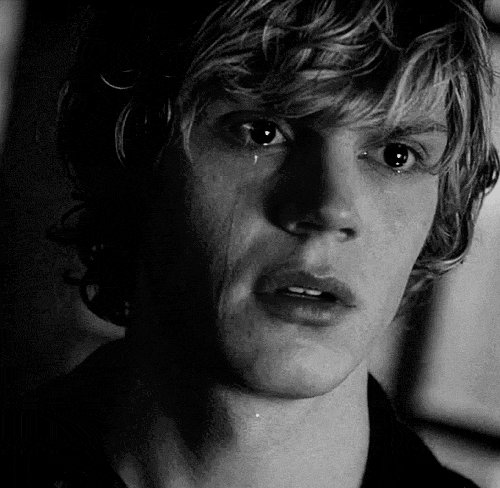

In the film industry, the energies of Moon-dominant men, characterized by their complex emotions, adaptability, and concealed depths, are astutely recognized by directors. This insight informs casting decisions, often placing Moon-dominant actors in roles that mirror the multifaceted nature inherent in them. Christian Bale's (Shravana sun) portrayal of Jim Luther in "Harsh Times" exemplifies this, exploring the darker recesses of the human psyche, a reflection of the Moon's association with concealed motives and intricate emotional situations. Similarly, Denzel Washington's (Shravana moon, Hasta asc.) performances in "American Gangster" and "Training Day" depict a tough exterior masking a softer core, Michele Morrone (Hasta sun & venus and Shravana rahu) in "365 Days" intertwines criminal elements with deep emotional entanglement, and Tom Hiddleston's (this one is super interesting because, while he doesn't have any primary moon placements, he does have Hasta jupiter & saturn— the moon nakshatra ruler and subruler of his chart plus Shravana Venus and ketu, so I consider him moon-dominant) Loki across Marvel films embodies cunning coupled with hidden vulnerability. Matt Daddario (see top of post) and Matt Bomer (Hasta moon, mercury, and rahu), in "Shadowhunters" and "White Collar" respectively, delve into the realms of a secret society of demon hunting & then crime/subterfuge with personal attachments to it, personifying the Moon's nature.
(GIF contexts: The first GIF shows Michele Morrone in 365 days shirtless and talking while looking down. The second GIF is taken from White Collar showing Matt Bomer talking frantically.)


Zachary Levi as Flynn Ryder personifies this duality - mischievous yet sensitive, conniving yet protective, masculine yet feminine, seeking introspective depth yet maintaining material asperations, and so on. Followed by Henry Cavill's roles, particularly Superman and Geralt, further illustrate this theme of his invincible, hyper-masculine superhero persona of Superman veiling the sensitive, complex nature of Clark Kent that he must keep hidden through great discipline (The original actor for Superman Kirk Alyn was also moon dominant (Hasta sun and mars with a lot of his chart's energy tracing back to sun). One the other hand, Christoper Reeve– arguably one of the most popular actors to play Superman– has his Sun and Mercury less than one degree away from being in Hasta, but overall, his chart is still Sun-dominated with a lot of Uttara Phalguni and Krikita, which makes sense because one: it was old hollywood, and two: the reason people love him is for his portrayal as the hyper-masculine persona of Superman, which would have been closer to Reeve's true nature anyway. In my opinion, his portrayal as Clark Kent is kind of bad because he treats that like it is supposed to be his geeky alter-ego rather than the fact that he would have been raised as Clark Kent– the humble farm boy from Kansas, not as Superman. Anyway, rant over). And Geralt, who presents a facade of absolute masculine strength defeating monsters for a living and projecting a sense of detachment from others, all while concealing a deeper, more nurturing and intimate side of himself. These portrayals, necessitating depth and often grappling with themes of manipulation and other complex moral dynamics, go hand-in-hand with the Moon's influence on hidden emotional strata and ethical complexities. The performances of these actors align with the experiences of many Moon-dominant men, reflecting the nature of their personalities. (Thank you so much to anyone who read this entire thing! 🙂 I know it’s a ton of information to get through, so I do really appreciate any time and effort people put into reading this!)
#vedic astrology#astrology#astrology observations#nakshatras#zodiac#astro community#astro notes#astro observations#zodiac signs#astrology notes#vedic chart#vedic astro observations#vedic astro notes#vedic texts#vedic mythology#lagna#astro placements#astroblr#sidereal astrology#capricorn#virgo#taurus#moon men#moon-dominant men
136 notes
·
View notes
Text
The Beginner's Guide to Understanding the Rigveda
Introduction:
The Rigveda is an ancient sacred text of India that is considered one of the oldest and most important texts in Hinduism. It offers valuable insights into ancient Indian civilization, religion, and culture, and remains a mystery to many people. In this beginner’s guide, we will explore the key concepts and themes in the Rigveda to help you gain a better understanding of this…
View On WordPress
#Ancient texts#ancient wisdom#Dharma#Hindu gods and goddesses#Hindu scriptures#Hinduism#Hymns#Indian culture#Indian history#Indian mythology#Indian philosophy#Mythology#Religious texts#Rigveda#Rituals#Sacred texts#Sanskrit#Spiritual texts#Vedas#Vedic period
1 note
·
View note
Text
Love you like a love song
🌹 (Astrology Observations) 🌹
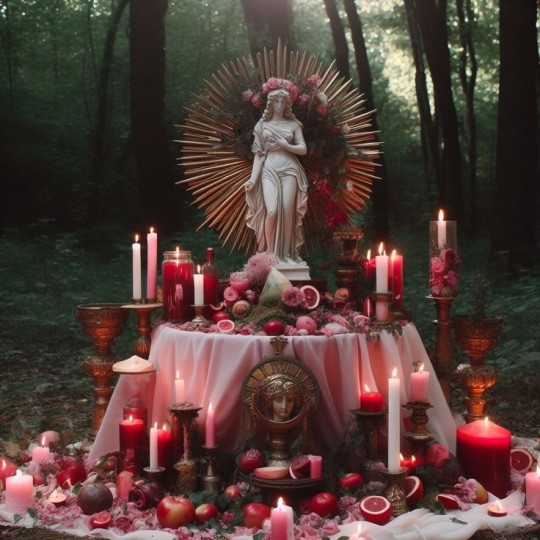
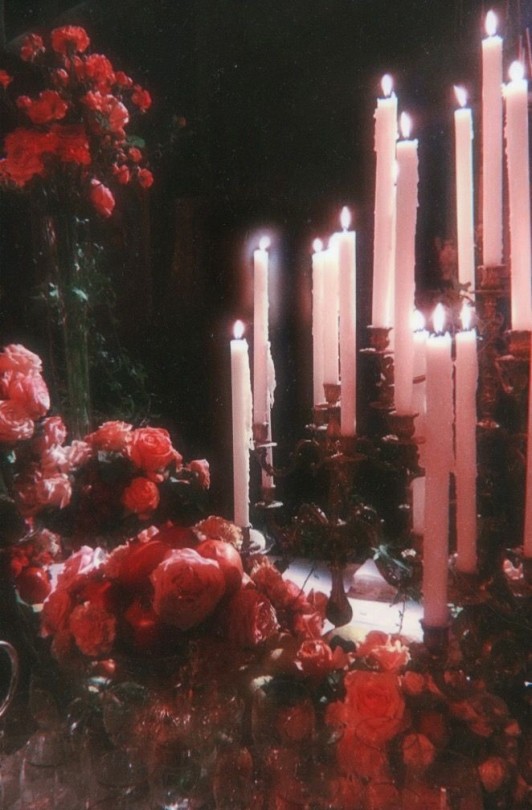
~ Music to my heart that's what you are
A song that goes on and on ~

🌹 - Eros (433) in Cancer/4th house or at Cancer Degrees (4°, 16°, 28°) can indicate your partner brings you a sense of home, they can be your comfort
🌹 - Eros (433) in Taurus/2nd house or at Taurus Degrees 2°, 14°, 26° can indicate your partner can be very abundent and passionate
🌹 - Eros (433) aspecting the ascendant makes the native erotic, beautiful, charming while aspecting the Midheaven (MC) makes the people as a whole to see them like that
🌹 - Eros in Gemini/3rd house or at 3°, 15°, 27° degrees can indicate your partner must have a very erotic voice/good at communicating/good at flirting
🌹 - North Node in Aquarius/at 11°, 23° degrees indicates the native's life path is to start something new/unique to the world

🌹 - Lust (4386) in the 1H/Aries/at 1°, 13°, 25° degrees can indicate a very lustful person, naughty, mischievous, very controlling of their desires
🌹- Cassanova (7328) in Aquarius natives might use a different or an unique tactic when flirting, they extra communicative at this
🌹 - Karma (3811) in Libra/aspecting Venus or in the 7H can bring you karmic partners/karmic relationships
──────────────────────
You are beautiful, like a dream come alive
──────────────────────
🌹 - Karma (3811) aspecting South Node indicates karma being brought up to you in this life from your past life 💖 but hey you have the chance to change it (Karma conjuncting my SN im done with life)
🌹 - Lust (4386) in Sagittarius/9H or at 9°, 21°, the native wants to be set free, to try all their lustful ideas with their partners, idk how to say this, but natives with these placements like to experience and try new things, literally giving switching the "positions" for you...
🌹 - Venus in the 6H/Virgo Venus/Venus at 6°, 18° get enemy -> lovers partners, people don't like you at first but somehow end up crushing for you...like girly ..didn't you hated me 2 seconds ago??
🌹 - Baddies with Gemini Venus/Venus in the 3rd house and 3°, 15°. 27° always spill the tea about their past relationships, like they love to tell stories about their exes
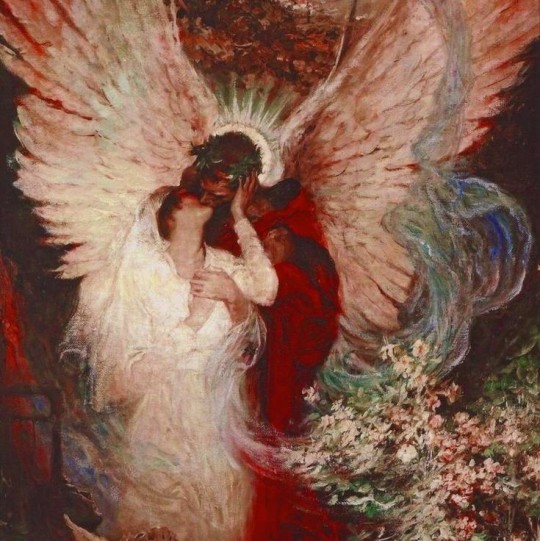
🌹 - Juno (3) in Air Signs natives are extremely charismatic, they charm with their words, these type of people who like text you at 3 am and finish the conversation in the morning
🌹 - Mercury aspecting Juno in good aspects make the natives to have a good communication between them and their partners (tense aspects can show that you don't always understand eachother)
🌹 - Vertex aspecting Juno can indicate a certain relationship of yours will change your life/faith/destiny but depends on the circumstances
🌹 - Scorpio/Aries/Capricorn/Taurus Sidereal/Vedic Risings can act more tough/dominant while on the inside they're the sweetest
🌹 - Juno aspecting Saturn can indicate an older spouse, like yasss you attract more older/mature/respectful people
🌹 - Pisces Juno/Juno in 12H/12°, 24° can indicate having a compassionate spouse/relationship, being affectionate can be a really good thing between you 2
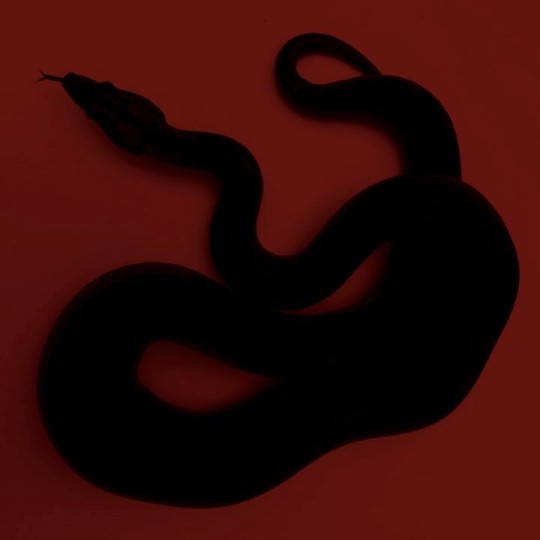
🌹 - Vertex aspecting Sun can indicate that your faith/destiny/future all depends on you and you are responsible for your own future
🌹 - Venus in 2H/Taurus/2°, 14°,26° love gifting. They will always make gifts for people they love! Especially surprises!! This placement also indicate expensive taste
🌹 - Sun/Leo in the 7H have a vibrant energy, that's why people can be into them so much, their nature is charismatic makes them to attract desirable people
🌹 - A high aspected Mercury or Venus will indicate artistic talents, being into music/arts/drawing/acting
🌹 - Sun aspecting Midheaven will attract attention whenever they go. It's something they can't hide
──────────────────────
There's no way to describe what you do to me
──────────────────────
🌹 - Lust (4386) in Pisces/12H or at 12°, 24° will indicate a native who fantasize a lot about their sexual desires/lustful dreams/they have a very naughty imagination
🌹 - Lust (4386) in Scorpio/8H/ or at 8°, 20° will indicate a very intense native, they'll get addicted to you or vice versa, you by them, they have a mesmerizing aura
🌹 - Ceres (1) in Scorpio/8H or at 8°, 20° can nurture themselves with doing love, as corny as it sounds, it's kinda true if you think about it, Scorpio rules over the reproductive organs and Ceres is a nurturing point
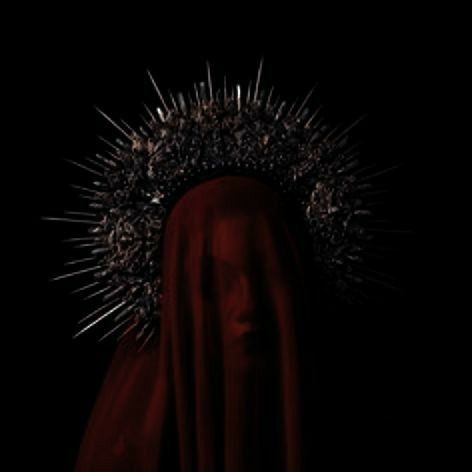
🌹 - Ceres (1) in Libra/7H or at 7°, 19° can indicate nurturing through relationships, self beauty and admiration, is a very beautiful placement to have in your chart
🌹 - Ceres in (1) in Capricorn/10H or at 10°, 22° indicates a native who has a soft yet long nurturing term, when is in the 10H you can heal through your career/job/public, your nurturing process can be seen by people/public
🌹 - Lilith in Sagittarius is possibly a place where Lilith feels the wildest, because she doesn't give 2 apples about Adam in this energy
🌹 - Lilith in Taurus is a very luxurious place for Lilith to find herself in, she develops a sense of a big self - value/worth here and builds her confidence
🌹 - If your Sun has little to no aspects, you have an easier time to be yourself/without having to hide yourself from others

🌹 - Moon in Aquarius/Moon in the 11H/Moon at 11°, 23°. The native has a charismatic energy, they love to make new connections/new friendships with people and in general they're very loyal towards these
🌹 - North Node in Gemini/3H or at 3°, 15°, 27° degrees indicates a life path where you learn to express yourself/your personality/your aura in the right way, discover yourself through arts/music/writing etc...
🌹 - North Node aspecting Lilith indicates a life path where you have to embrace your shadow self/your bad side, to embrace and to understand that you have both good & bad sides
🌹 - Moon aspecting Lilith especially in harsh aspects are not to joke about, Lilith transforms into a venomous snake when is in harsh aspects with the Moon and it can be from powerless to dangerous to powerful and so on..
🌹 - Having a sidereal/vedic Sagittarius Sun is not that bad. Actually not at all, I have this placement at 20° in my vedic chart and it helps me being optimistic in my life
🌹 - GUYS remember how I did a post saying how much i love Pisces Venus and that I'll trade my Scorpio Venus for it? Well the Universe heard my prayer and after I found out my right birth time I actually found out I have Pisces Venus in my D9 chart (vedic astrology) which for me is still a win because I love this placement so much!!😭🌹 I literally started jumping when I discovered

🌹 "A song that goes on and on" 🌹
- Harmoonix
#astrology#birth chart#astro notes#astro observations#astrology observations#placements#astro community#horoscope#ascendant#venus#astro blog#asteroids#astro#astro.com#astro seek
977 notes
·
View notes
Text
Nakshatras as textposts I've found here
For fun!!! Guys this is for fun!!! For funsies
Mrigashira:

Bharani:

Revati/Punarvasu:

Ardra/Mula:

Revati:

Shatabhisha/Shravana/Revati:

Bharani:

Mrigashira:

Bharani/Revati/Punarvasu:

Jyeshta/Ardra:

#vedic astrology#astrology#astrology observations#nakshatras#sidereal astrology#astro notes#astrology tumblr#text posts
50 notes
·
View notes
Text
South Asian and Hindu Influences in ATLA (Part 2)
disclaimer: i was raised culturally and religiously hindu, and though i've tried to do my research for this post and pair it with my own cultural knowledge, i'm not an expert on hinduism by any means. should i mess up, please let me know.
please also be aware that many of the concepts discussed in this post overlap heavily with religions such as buddhism and jainism, which might have different interpretations and representations. as i'm not from those religions or cultures, i don't want to speak on them, but if anyone with that knowledge wishes to add on, please feel free.
Part 1
In the previous post, I discussed some of the things ATLA got right in its depictions of desi and hindu cultures. unfortunately, they also got plenty of things wrong - often in ways that leaned towards racist caricatures - so let's break them down, starting with...
Guru Pathik
both the word "guru" and name "pathik" come from sanskrit. pathik means "traveler" or "he who knows the way" while guru is a term for a guide or mentor, similar to a teacher.
gurus were responsible for the very first education systems in ancient india, setting up institutions called gurukuls. students, referred to as disciples, would often spend years living with and learning from their gurus in these gurukuls, studying vedic and buddhist texts, philosophy, music and even martial arts.
however, their learning was not limited merely to academic study, as gurus were also responsible for guiding the spiritual evolution of their disciples. it was common for disciples to meditate, practice yoga, fast for days or weeks, and complete mundane household chores every day in order to instill them with self-discipline and help them achieve enlightenment and spiritual awareness. the relationship between a guru and his disciple was considered a sacred, holy bond, far exceeding that of a mere teacher and student.
aang's training with guru pathik mirrors some of these elements. similar to real gurus, pathik takes on the role of aang's spiritual mentor. he guides aang in unblocking his chakras and mastering the avatar state through meditation, fasting, and self-reflection - all of which are practices that would have likely been encouraged in disciples by their gurus.
pathik's design also takes inspiration from sadhus, holy men who renounced their worldly ties to follow a path of spiritual discipline. the guru's simple, nondescript clothing and hair are reflective of the ascetic lifestyle sadhus are expected to lead, giving up material belongings and desires in order to achieve spiritual enlightenment and, ultimately, liberation from the reincarnation cycle.
unfortunately, this is where the respectful references end because everything else about guru pathik was insensitive at best and stereotypical at worst.
it is extremely distasteful that the guru speaks with an overexaggerated indian accent, even though the iranian-indian actor who plays him has a naturally british accent. why not just hire an actual indian voice actor if the intention was to make pathik sound authentic? besides, i doubt authenticity was the sole intention, given that the purposeful distortion of indian accents was a common racist trope played for comedy in early 2000s children's media (see: phineas and ferb, diary of a wimpy kid, jessie... the list goes on).
furthermore, while pathik is presented a wise and respected figure within this episode, his next (and last) appearance in the show is entirely the opposite.

in the episode nightmares and daydreams, pathik appears in aang's nightmare with six hands, holding what appears to be a veena (a classical indian music instrument). this references the iconography of the hindu deity Saraswati, the goddess of wisdom and knowledge. the embodiment of divine enlightenment, learning, insight and truth, Saraswati is a member of the Tridevi (the female version of the Trimurti), one of the most respected and revered goddesses in the Hindu pantheon... and her likeness is used for a cheap laugh on a character who's already treated as a caricature.
that's bad enough on its own, but when you consider that guru pathik is the only explicitly south asian coded character in the entire show, it's downright insulting. for a show that took so many of its foundational concepts from south asia and hinduism and yet provided almost no desi representation in return, this is just rubbing salt in the wound.
Chakras
"chakra", meaning "circle" or "wheel of life" in sanskrit, refers to sources of energy found in the human body. chakra points are aligned along the spine, with energy flowing from the lowest to the highest point. the energy pooled at the lowest chakra is called kundalini, and the aim is to release this energy to the highest chakra in order to achieve spiritual enlightenment and consciousness.
the number of chakras varies in different religions, with buddhism referencing five chakras while hinduism has seven. atla draws from the latter influence, so let's take a look at the seven chakras:
Muladhara (the Root Chakra). located at the base of the spine, this chakra deals with our basest instincts and is linked to the element of earth.
Swadhisthana (the Sacral Chakra). located just below the navel, this chakra deals with emotional intensity and pleasure and is linked to the element of water.
Manipura (the Solar Plexus Chakra). located in the stomach, this chakra deals with willpower and self-acceptance and is linked to the element of fire.
Anahata (the Heart Chakra). located in the heart, this chakra deals with love, compassion and forgiveness and is linked to the element of air. in the show, this chakra is blocked by aang's grief over the loss of the air nomads, which is a nice elemental allusion.
Vishudda (the Throat Chakra). located at the base of the throat, this chakra deals with communication and honesty and is linked to the fifth classical element of space. the show calls this the Sound Chakra, though i'm unsure where they got that from.
Ajna (the Third Eye Chakra). located in the centre of the forehead, this chakra deals with spirituality and insight and is also linked to the element of space. the show calls it the Light Chakra, which is fairly close.
Sahasrara (the Crown Chakra). located at the very top of the head, this chakra deals with pure cosmic consciousness and is also linked to the element of space. it makes perfect sense that this would be the final chakra aang has to unblock in order to connect with the avatar spirit, since the crown chakra is meant to be the point of communion with one's deepest, truest self.
the show follows these associations and descriptions almost verbatim, and does a good job linking the individual chakras to their associated struggles in aang's arc.
Cosmic Energy
the idea of chakras is associated with the concept of shakti, which refers to the life-giving energy that flows throughout the universe and within every individual.
the idea of shakti is a fundamentally unifying one, stating that all living beings are connected to one another and the universe through the cosmic energy that flows through us all. this philosophy is referenced both in the swamp episode and in guru pathik telling aang that the greatest illusion in the world is that of separation - after all, how can there be any real separation when every life is sustained by the same force?
this is also why aang needing to let go of katara did not, as he mistakenly assumed, mean he had to stop loving her. rather, the point of shedding earthly attachment is to allow one to become more attuned to shakti, both within oneself and others. ironically, in letting go of katara and allowing himself to commune with the divine energy of the universe instead, aang would have been more connected to her - not less.
The Avatar State
according to hinduism, there are five classical elements known as pancha bhuta that form the foundations of all creation: air, water, earth, fire, and space/atmosphere.
obviously, atla borrows this concept in making a world entirely based on the four classical elements. but looking at how the avatar spirit is portrayed as a giant version of aang suspended in mid-air, far above the earth, it's possible that this could reference the fifth liminal element of space as well.
admittedly this might be a bit of a reach, but personally i find it a neat piece of worldbuilding that could further explain the power of the avatar. compared to anyone else who might be able to master only one element, mastering all five means having control of every building block of the world. this would allow the avatar to be far more attuned to the spiritual energy within the universe - and themselves - as a result, setting in motion the endless cycle of death and rebirth that would connect their soul even across lifetimes.
#atla#atla cultural influences#hinduism in atla#welp i thought this would be the last part but i ended up having more to talk about than i thought#so i'll save the book 3 inspirations for the next post#including my absolute favourite combustion man#and by favourite i mean kill it with fire why did you ever think this was okay to do writers
365 notes
·
View notes